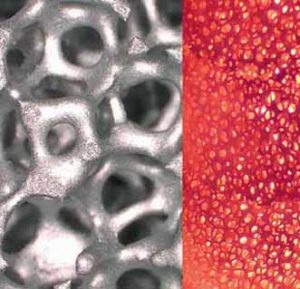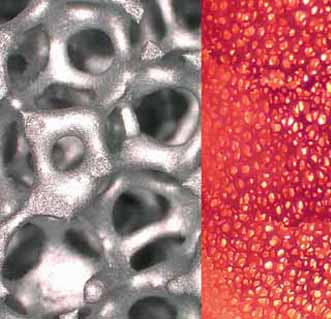 Improvements like high power efficiency and low emissions are the main targets of technological development in combustion processes. Efficient conversion of chemical energy into heat is very important in many different fields, ranging from large-scale industrial burners to small gas heaters in domestic applications. Minimal pollutant emissions required by the tightened environmental regulations have to be compatible with the demand for higher radiant heating rates. Several investigations have proved porous burner technology to be advantageous.
Improvements like high power efficiency and low emissions are the main targets of technological development in combustion processes. Efficient conversion of chemical energy into heat is very important in many different fields, ranging from large-scale industrial burners to small gas heaters in domestic applications. Minimal pollutant emissions required by the tightened environmental regulations have to be compatible with the demand for higher radiant heating rates. Several investigations have proved porous burner technology to be advantageous.
The benefit of the combustion taking place in a porous medium is that the fuel/air mixtures are preheated. Thus, the peak temperature is decreased resulting in a reduction of NOx emissions. Furthermore, porous burners offer low emissions of carbon monoxide and unburned hydrocarbon, as well as high energy efficiency and high power density.
The potentials of porous burner technology sound amazing, but a lot of problems remain to be solved in the field of materials science: due to the high power density of the burners the materials are subjected to high loads in terms of thermal shock, temperature and corrosion.
Alexander Füssel and coworkers at the Fraunhofer Institute in Dresden, Germany, present in a recently published paper some examples of research and development strategies and results in developing improved cellular ceramics. Considering several ceramic concepts, silicon carbide (SiC) has shown to be the best compromise between operating temperature, corrosion resistance, thermal conductivity and thermal shock resistance.
Therefore, Füssel and coworkers investigated different types of SiC in respect to their behavior in combustion environments. According to the different sintering mechanisms and bonding types, the scientists obtained various properties. Although the oxidation rates of foams are higher than those for bulk materials, the investigation revealed that pressure-less sintered silicon carbide (SSiC) is the most promising material.
The task for future work will be the advancement of the microstructure to further reduce the inner porosity. This will allow SSiC to be used in long-term applications such as in afterburners of solid oxide fuels cells (SOFC) systems. Besides these technological requirements, simple components are needed made of cheap materials for domestic or automotive mass application.

















